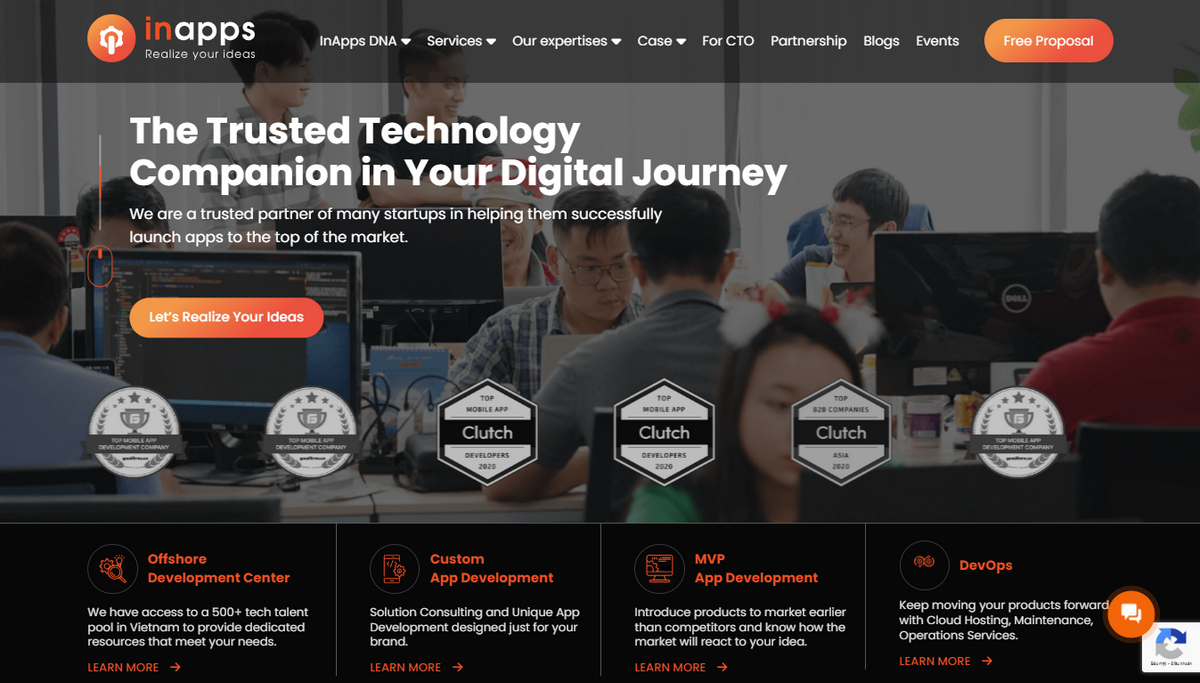Insourcing vs Outsourcing: Which approach suits your IT project needs better?
IT projects are a must for businesses aiming to stay competitive and efficient. But these projects need lots of resources and know-how to succeed. So, companies must decide whether to do these projects themselves or get outside help. This choice is called insourcing vs outsourcing, and it’s a big deal.
Insourcing means using your team, tools, and abilities to handle IT projects. Outsourcing means hiring outside folks like advisors, contractors, or companies to take on the projects. And what you pick depends on how big the project is, how much money and time you have, and how complicated it is.
This article is all about comparing outsourcing vs intsourcing. Our team and InApp experts will give tips on finding the right balance for your IT projects. By the time you finish reading, you’ll get why each choice has its good parts and challenges. That way, you can choose the best for your next IT project without sweat.
Sounds great? Let’s go!
What is Outsourcing? (IT Outsourcing Definition)
Outsourcing is a business strategy where services or tasks are delegated to a third party under a contract. In the field of IT, outsourcing can cover a range of activities. It can involve handing over the entire IT operations or just specific parts, like disaster recovery, network services, software creation, or QA testing.

IT Outsourcing can substantially reduce labor expenses for companies. Instead of doing all the work internally, a company hires external organizations to do specific tasks.
These outside groups usually have different payment setups with their workers compared to the hiring company, which lets them complete the work for less. This, in turn, helps the outsourcing company reduce its labor costs effectively.
What is Insourcing? (IT Insourcing Definition)
Insourcing means giving a project to people or a team already in the company rather than getting help from outside. It uses the skills and tools that the company already has to get jobs done or meet goals.

For instance, a company might choose to do technical support for a new product by using its technical support team that’s already working on another product.
Additionally, insourcing usually sets up new tasks and ways of doing things right within the company. This can make insourcing cost more for a company because it often needs to create new methods to start a different section within the company.
You might like: Popular Outsourcing Models Compared – How to Choose the Best One in 2023?
Insourcing vs Outsourcing: What factors to consider?
When it comes to managing projects and tasks, businesses often find themselves at a crossroads:
Should they insource or outsource?
Each approach, insourcing and outsourcing, has benefits and drawbacks that can significantly impact an organization’s operations and outcomes.
The advantage of outsourcing
- Access to specialized skills: External providers bring expertise to specific areas, ensuring top-notch results.
- Cost savings: Outsourcing proves economical for unique or one-time projects. External partners possess efficient processes and resources, minimizing the need for long-term investments.
- Flexibility: Businesses can swiftly adjust their operations by tapping into external resources, which can help businesses adapt promptly to changing demands.
- Focus on core strengths: By outsourcing non-essential tasks, internal teams can concentrate on activities directly aligned with the company’s main objectives.
Clearly, outsourcing provides a swift and efficient way to accomplish tasks without straining finances. However, it’s crucial to consider the drawbacks before making a decision. Let’s explore some of the downsides of outsourcing.
The disadvantage of outsourcing
- Lose control: When we delegate tasks to outside groups, it’s harder to directly oversee the work, which might impact its quality and alignment.
- Communication issues: Working with external teams can lead to misunderstandings and delays due to miscommunication and differing time zones.
- Security worries: When we share sensitive information with third parties, there’s a risk to data security and confidentiality. To counter this, strong contracts and safeguards are essential.
- Become dependent: Depending too much on external providers might result in losing our in-house expertise and abilities as time goes on.

The advantages of insourcing
- Maintain control and coordination: Keeping tasks within the organization’s walls enables direct oversight. Teams can closely track progress, make instant adjustments, and ensure tasks are in line with the company’s standards.
- Tap into internal expertise: Making the most of the skills and knowledge of current staff nurtures a unified work environment. Team members are attuned to the company’s culture, goals, and processes, contributing to streamlined operations.
- Protect confidentiality and security: Important information remains within the organization, lowering potential risks linked to sharing data externally. This is particularly vital for industries with stringent data privacy demands.
- Achieve long-term cost efficiency: Over time, repeated tasks can be more cost-effective when managed internally. Therefore, investments in training and skill development lead to an experienced workforce that can handle various projects.
The disadvantages of insourcing
- Limited specialization: Not all projects align with the company’s expertise. This may lead to suboptimal outcomes if the organization needs more skills for a particular task.
- Resource allocation: Insourcing requires dedicating internal resources, which could strain existing teams or delay other critical initiatives.
- Increased overhead: The organization must bear the costs of maintaining and managing the necessary infrastructure and personnel, potentially leading to increased overhead expenses.

Insourcing vs Outsourcing: Which Strategy Suits You Best?
In the end, the decision isn’t simply about outsourcing or not. The real question should be:
Which of your services should be entrusted to an external provider?
Outsourcing becomes the primary choice when it comes to IT services, which are essentially standardized. This is where you’re likely to reap the most significant cost savings and encounter the least risk.
On the other hand, services more suited for internal management often encompass:
- Services tied to confidential data
- Highly specialized services
- Services that could expose your critical intellectual property
Issues with these specific services can pose a higher risk to your reputation and often come with a significantly higher price tag – neither of which might be justifiable.
Conversely, there are services that are best wholly handed over to a third party. A prime example is software testing.
A company might opt to outsource for various reasons, but two major factors stand out: cost reduction and sharpened focus on core objectives.

The most apparent advantage lies in financial outcomes in comparing IT outsourcing vs insourcing. Enlisting third parties to manage particular aspects of a task means shedding the financial load associated with that task and transferring it elsewhere. The company still bears the expense of these services, but the advantages of outsourcing far outweigh the costs.
The need to invest in infrastructure or train personnel to execute a project successfully is eliminated. Instead, you can harness the expertise of field professionals at a significantly lower expense.
By entrusting the more routine, administrative, or time-intensive work to a third party, the outsourcing company can concentrate on its roadmap to reach core goals. In the long haul, outsourcing serves as a means to optimize a company’s business model. Your task is to figure out how to make it seamlessly integrate into your business.
Insourcing vs Outsourcing: The bottom line
Determining the best choice for your business takes a lot of work. Your decision significantly depends on the specific requirements of your project.
For instance, partnering with an outsourcing provider is a suitable route if you’re looking to create a mobile application or provide excellent customer support. This approach fits most small and medium-sized businesses (SMBs) that often seek quick and standardized solutions.
However, if your company is working on a unique, custom product, embracing InApps Technology’s IT outsourcing services can be a game-changer at this time.
InApps Technology stands as a prominent figure in the mobile app development field. Our services include product engineering, digital transformation, and emerging technologies. With our headquarters in Ho Chi Minh City, Vietnam, we’ve been operational since 2016.
Our dedicated team comprises over 100 skilled developers, designers, testers, and project managers who have successfully delivered 200+ projects for clients across various industries and countries. Most notably, teaming up with InApps Technology can lead to a 50% reduction in costs, opening up new avenues for business growth.

Besides, you can delve into our “Portfolio” resource library, where you’ll discover a wealth of case studies, testimonials, videos, and more, showcasing our successful projects and satisfied clients. You can also explore our “Blog” section for the latest insights and trends in mobile app development. Thank you for reading!
Let’s create the next big thing together!
Coming together is a beginning. Keeping together is progress. Working together is success.


















